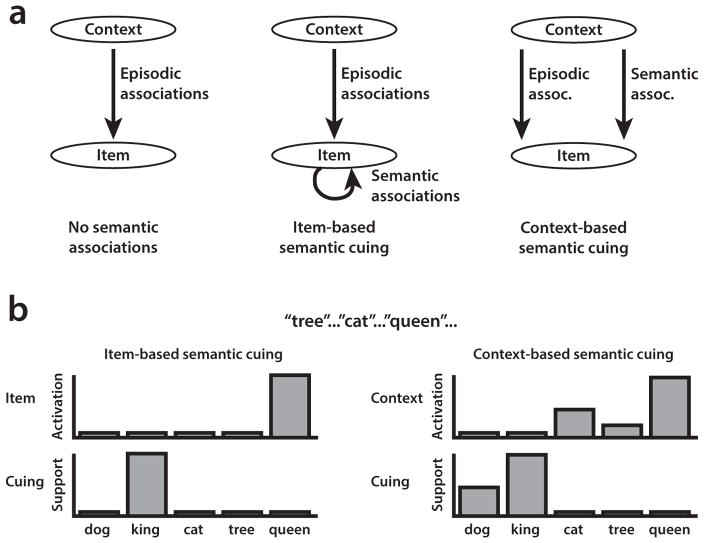Figure 2.
Illustration of cuing mechanisms used by the different model variants. (a) Schematic of model variants. Left: Model with no semantic associations. Recall is driven solely by episodic associations between items and context. Center: Temporal context influences recall through episodic cuing as before, but retrieved items also will cue for other semantically related items, providing additional support for those items. Right: Only context is used as a cue to retrieve items; context projects through both episodic and semantic associations. (b) Schematic of predictions for item-based semantic cuing and context-based semantic cuing, after learning a sample list and recalling the sequence “tree”, “cat”, “queen”. In the item-based semantic cuing model, only the last recalled item, “queen,” is used as a semantic cue, resulting in stronger support for the related item “king.” In the context-based semantic cuing model, the entire current state of context is used as a semantic cue. Since “cat” is still somewhat active in context, it provides additional support for the related item “dog.”

